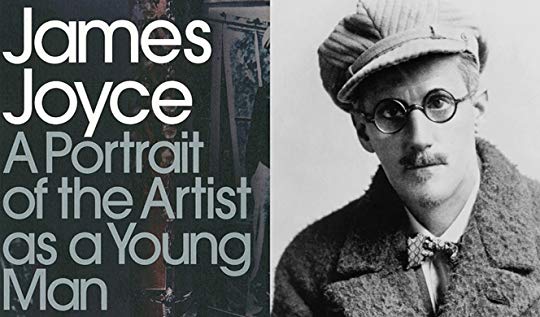The World of Books
Back in the 1950s, when such a case was less common, an Irish poet was teaching a course on modern Ireland literature in a US university. He chose James Joyce’s A Portrait of the Artist as a Young Man (1916) as the text for the semester. By the time he was finished, he later confessed, “the class were Parnellites one and all”.
One the most powerful scenes in the book is the Christmas dinner in the house in Bray where old Fenian supporter of Parnell breaks down in tears for his poor dead king.
‘Mr Casey’ was modelled on a Joyce family friend, John Kelly. He is discussed in detail in my book James Joyce: The Years of Growth (1992). The image of him on this page comes from that book. It is a Special Branch photograph taken by the policeman shadowing him with a concealed “detectivce-camera” on St Stephen’s Green. I found this attached to Kelly’s police file in the National Archives. It is the only picture of the man I have ever seen.
Quite as effective (as some of the students later found) was the story from Dubliners (1914), ‘Ivy Day in the Committee Room’. In Ulysses (1922) too the mourners for Mr Cunningham go round to visit the grave of the Chief (a title that Fianna Fáil later usurped for Dev). In fact, there is nothing Joyce wrote that was free from the memory of the dead leader. Even the working notes for Joyce’s only play Exiles (1918) cogitate on the historical significance of Katherine O’Shea.
This perennial passion, which Joyce derived from his father John Stanislaus Joyce, who lingered on still talking about Parnell in the 1930s. This Parnellite tradition and its literary after life is discussed in my biography of John Joyce, written with John Wyse Jackson.
By the time John Joyce died, a new generation was emerging into public life. Just as the image of the old Fenian by the cottage fireside had informed the Easter Rising, so these lingering Parnellites informed the body politic with the habits of democracy, as suggested in the review of Martin O’Donoghue’s new book across the page – a book which, alas, neglects to deal with Parnell in literature.
We should honour those democrats who in the past seized every opportunity to sit in any the democratic assembly they were elected to”
Yeats too was deeply influenced by the legend of Parnell, as was his brother Jack the painter. This theme is explored further by Herbert Howarth in his book The Irish Writers 1880-1940 (1958) which explores what he calls a “literature under Parnell’s star”.
Conor Cruise O’Brien in one of the chapters of his important study of the Catholic imagination, Maria Cross (New York, 1952), is devoted to ‘The Parnellism of Sean O’Faolain’. (Another of O’Faolain’s books, widely read at the time of publication, was Newman’s Way (1952) which reminds us that there was a time when Irish writers were not ashamed to engage with Catholic thought.)
O’Faolain was also a founder of the Irish Civil Right Association – a landmark in Ireland’s social maturity”
The reputation of O’Faolain has faded a little, but his civilised voice is a distinctive one, which is destined to survive much that appears today. O’Faolain (like his then friend Frank O’Connor) had been an active IRA man, but his conscience led him to break with ‘the movement’ when it became, as he thought, destructive of Irish character. The darker record of the War of Independence is reflected in their stories, as described in my literary study The Heart Grown Brutal: The Irish Revolution in Literature from Parnell to the Death of Yeats (1977).
I mention O’Faolain as he was a founder editor of The Bell, perhaps the sanest ‘little magazine’ and the most influential ever created in Ireland. He was also a founder of the Irish Civil Right Association – a landmark in Ireland’s social maturity.
At the moment we are marking the establishment of the Dáil. But we should also honour those democrats who in the past seized every opportunity to sit in any the democratic assembly they were elected to.
In these activities to I think we can see the democratic heritage of O’Connell and Parnell continued.
Once a public figure such as Parnell becomes a part of literature their memory will never fade. Parnell lives on in Irish literature (especially in the pages of Joyce) in a way no other political figure in Ireland ever has again.


 Peter Costello
Peter Costello